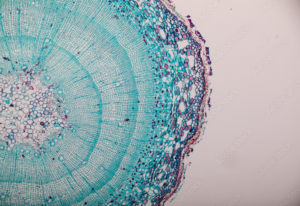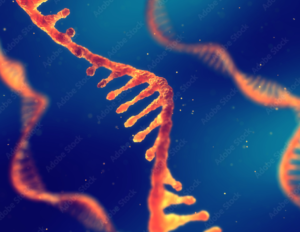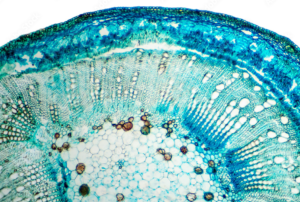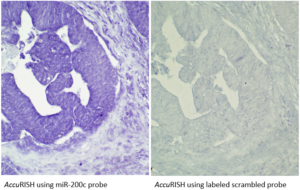
Welcome to InCeltu
Based in Rockville, Maryland, InCeltu, LLC is focused to develop the best RNA in situ detection technology and provides in situ hybridization services to its customers in academia, government, pharma and biotech companies for detection of any RNA targets, including micro RNA, lncRNA, in FFPE tissue sections.
InCeltu’s services are based on its proprietary AccuRISH technology, the best chromogenic in situ hybridization technology that is able to locate and measure any RNA targets, including mRNA, miRNA, siRNA and lincRNA, in situ on FFPE tissue sections at cellular level. InCeltu’s AccuRISH technology produces the highest quality RISH images among its competitors and makes RNA based biomarker and drug discovery easier.
Locate Your RNA Targets with Precision

Our Mission
After the discovery of noncoding RNA, RNA molecules are no longer considered just as communicators between DNA and protein, but also as key regulators in the development of many human diseases. The expression pattern of those disease related RNA molecules can be measured and used as biomarkers to guide the diagnosis and treatment of human diseases in the upcoming personalized medicine.
A key technology for discovery and validation of the next generation RNA biomarkers is RNA in situ hybridization (RISH) for detection of RNA targets in formalin-fixed paraffin-embedded (FFPE) clinical samples. Compare to other detection technologies, RISH is the only one that can reveal the location and expression level of the RNA targets at tissue and cellular level, which is critically related to the development of disease. Compare to PCR, RISH is actually more sensitive that a single positive cell can be detected in a tissue section, no more need for laser capture micro dissection. InCeltu’s AccuRISH technology accelerates the discovery of RNA biomarkers and RNA drugs by providing the best RNA in situ hybridization service to the RNA research community.

Our Vision
RNA molecules, once seen as simple messengers between DNA and proteins, are now recognized as pivotal regulators of human diseases. These molecules, particularly noncoding RNAs, hold immense potential as biomarkers for guiding the diagnosis, prognosis, and treatment of diseases in the era of personalized medicine.
InCeltu’s mission is to advance the discovery and validation of next-generation RNA biomarkers and RNA-based therapeutics by providing the most accurate and reliable RNA in situ hybridization services.

Why RISH
qRT- PCR can not preserve the cellular relationship and tissue structure making RNA ISH a perfect complement to create a full RNA expression profile.
Currently immunohistochemistry (IHC) and RNA ISH are two commonly used technologies to detect biomarkers on tissue sections at the cellular with morphological information.
- RISH provides morphological information at tissue and cellular level.
- RISH does not produce false positive results caused by contamination in PCR
- RISH is more sensitive: RISH can detect a single positive cell in a tissue section to avoid the need of laser micro dissection for PCR
- RISH is less expensive: the development of an antibody for IHC costs much more than a RISH probe.
- RISH provides better specificity: the specificity of a probe is better than that of an antibody and is much easier to validate.

Our Technology
Although RISH has been around for over 40 years, most of the current RISH protocols produce high back ground signals due to poor probe design and improper hybridization and washing conditions. These protocols usually use long probes (over 100nt) and relatively low temperature (20oC below annealing temperature) for hybridization and washing. Long probes can be easily trapped on the cell matrix and at low washing temperature non–specifically bound probes cannot be completely removed after washing, resulting in a RISH image with high background signals. We have established a probe design algorism that uses only 15-20 nt target-specific sequence for probe synthesis to eliminate non-specific probe hybridization. For each probe highest hybridization and washing temperature will be tested to avoid non-specific binding of the probe and eliminate background signal. This accurate RNA in situ hybridization (AccuRISH) technology developed by InCeltu produces the most accurate RNA detection image with no cross binding of probe and generates very low background signal. (picture 2) . Using AccuRISH , for the first time, we are able to precisely determine the location of any RNA targets at cellular level.

Why AccuRISH
High specificity: our probe design algorism only uses highly unique target sequence for probe synthesis to avoid cross hybridization.
Low background: we use the highest temperature possible for hybridization and washing to eliminate non-specific annealing of probe.
High sensitivity: our unique signal amplification system yields highly sensitive RNA detection signal.
Cellular localization: InCeltu’s AccuRISH can precisely locate the position of the target RNA at cellular level.

Partnership
InCeltu welcomes the opportunity to establish long term partnerships with research groups in academia, government and industry to use our AccuRISH technology for the discovery of RNA biomarkers and RNA drugs for human diseases. In these partnerships, InCeltu will work with you to apply or modify our AccuRISH technology to best fit the need of your detection method, such as multiplex fluorescence RNA detection.
For partnership opportunities contact:

